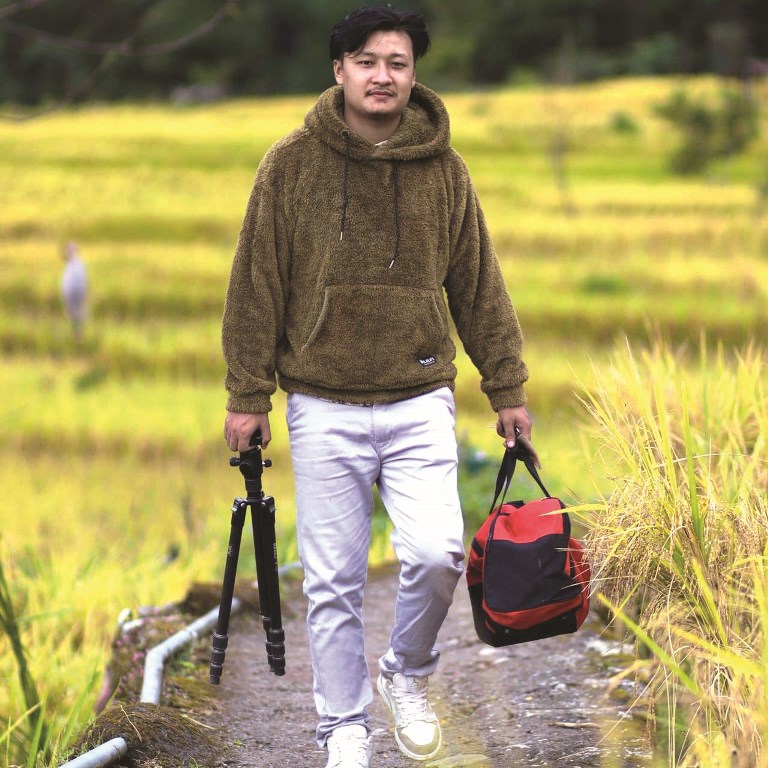SATURDAY, SEPTEMBER 06, 2025
- Home
- Rhythm of Love: In conversation with Justin Yiese
Rhythm of Love: In conversation with Justin Yiese
Published on Feb 29, 2024
Share

DIMAPUR — Hailing from Kohima, Kekhriesituo Justin Yiese is a talented singer and songwriter, and a member of the boyband ‘The Last Glance4X.’
Popularly known by the name Justin Yiese, his musical journey was inspired by a childhood spent immersed in church programmes, where he discovered his love of music.
He said that his uncle Mezhüzolie Yiese, a renowned gospel musician, has been a major influence -- a harmonious blend of inspiration and personal growth.
In an exclusive interview with Eastern Mirror, Yiese gives a glimpse of his journey in the music industry and his future endeavours.
Eastern Mirror: Nagaland has a rich cultural heritage. What are your thoughts on incorporate your Naga roots and influences into your music?
Yiese: I believe that incorporating my Naga roots into my music not only honours my heritage but also adds a unique and authentic dimension to my artistic expression. Whether it's infusing traditional instruments, melodies, or lyrical themes inspired by Naga folklore and traditions, I strive to weave these elements seamlessly into my compositions.
Eastern Mirror: What genre do you feel best represents your artistic expression?
Yiese: I find that my artistic expression is best represented through a fusion of pop and R&B soul. These genres allow me to showcase the depth of my emotions and experiences through soulful melodies, heartfelt lyrics, and rhythmic grooves.
Eastern Mirror: Can you share a turning point or moment in your musical journey that has significantly shaped your identity as an artist?
Yiese: Certainly! When reflecting on my musical journey, one pivotal moment that significantly shaped my identity as an artist was the release of my song ‘Drama Queen’ and its subsequent success on the top charts at Indihut. This marked a transition from singing in more traditional settings like schools and churches to gaining recognition in the broader music industry. The experience of seeing my original composition resonate with audiences on such a scale not only validated my artiste abilities but also instilled a newfound confidence in my creative voice.
Eastern Mirror: In a rapidly changing music industry, how do you stay authentic to your personal style while adapting to new trends?
Yiese: First and foremost, authenticity is at the core of my artistic identity. It's about staying true to my unique voice, experiences, and musical influences. I consistently draw inspiration from my personal journey, emotions, and the world around me to create music that resonates with both myself and my audience on a genuine level. However, I also recognise the importance of staying attuned to the pulse of the industry and being aware of emerging trends and evolving tastes.
Eastern Mirror: How do you handle creative challenges in the songwriting process, and where do you draw inspiration during such times?
Yiese: Handling creative challenges in the songwriting process is an integral part of being a musician. One strategy I employ is to embrace the challenge rather than resist it. I view creative blocks or obstacles as opportunities for growth and innovation. Instead of becoming frustrated, I channel that energy into exploring different approaches, experimenting with new techniques, or revisiting old ideas from fresh perspectives. Collaboration also plays a significant role in overcoming creative challenges. Engaging with other musicians, producers, or songwriters can provide valuable insights and fresh ideas that reignite my creativity.
Eastern Mirror: Many musicians find their voice through experimentation. Is there a particular song or project that reflects a departure from your usual style?
Yiese: While experimentation is undoubtedly a valuable tool for many musicians to find their voice, I've found that my own artistic journey has been characterised more by evolution and refinement rather than a drastic departure from my usual style. I've spent years honing my craft and developing a distinct musical identity that feels authentic and true to myself.
Eastern Mirror: If you could change one thing in Nagaland music industry, what would it be?
Yiese: If I could change one thing in the Nagaland music industry, it would be to foster greater support and infrastructure for emerging artists, particularly in terms of mentorship, education, and access to resources. While Nagaland boasts a rich musical heritage and a vibrant community of talented musicians, many aspiring artists face challenges in accessing formal training, guidance, and opportunities for growth.
While investing in the development of modern infrastructure, such as recording studios, rehearsal spaces, and performance venues, would create more avenues for artists to showcase their talent and reach wider audiences.
Eastern Mirror: What is your perspective on the current state of the music industry in Nagaland?
Yiese: As an artiste immersed in the Nagaland music scene, I view the current state of the music industry in Nagaland with a mix of optimism and recognition of the challenges that lie ahead.
The other issues such as piracy, copyright infringement, and the absence of robust distribution channels pose obstacles to monetising music and sustaining livelihoods for musicians. Nevertheless, there are signs of progress and positive momentum. Initiatives by local organisations, government agencies, and passionate individuals are working towards addressing some of these challenges by providing platforms for artists.
Eastern Mirror: Collaborations often bring fresh perspectives. Is there a dream collaboration you have in mind, with a fellow Naga artiste?
Yiese: In the context of the Nagaland music scene, I've long harboured dreams of collaboration with two incredibly talented artists-- Moko Koza, the dynamic rapper, and KL Pamei, the renowned pop singer.
Eastern Mirror: What upcoming projects or releases can your fans look forward to?
Yiese: My fans can look forward to an exciting upcoming project—a brand new Angami pop song that I've been pouring my heart and soul into. This project is particularly special to me as it's a celebration of my cultural heritage and a reflection of my personal journey as an artiste.

